6 Unconventional Customer Acquisition Strategies
Much of customer acquisition is trial and error. Brainstorming new customer acquisition strategies is key to keeping your strategy fresh.
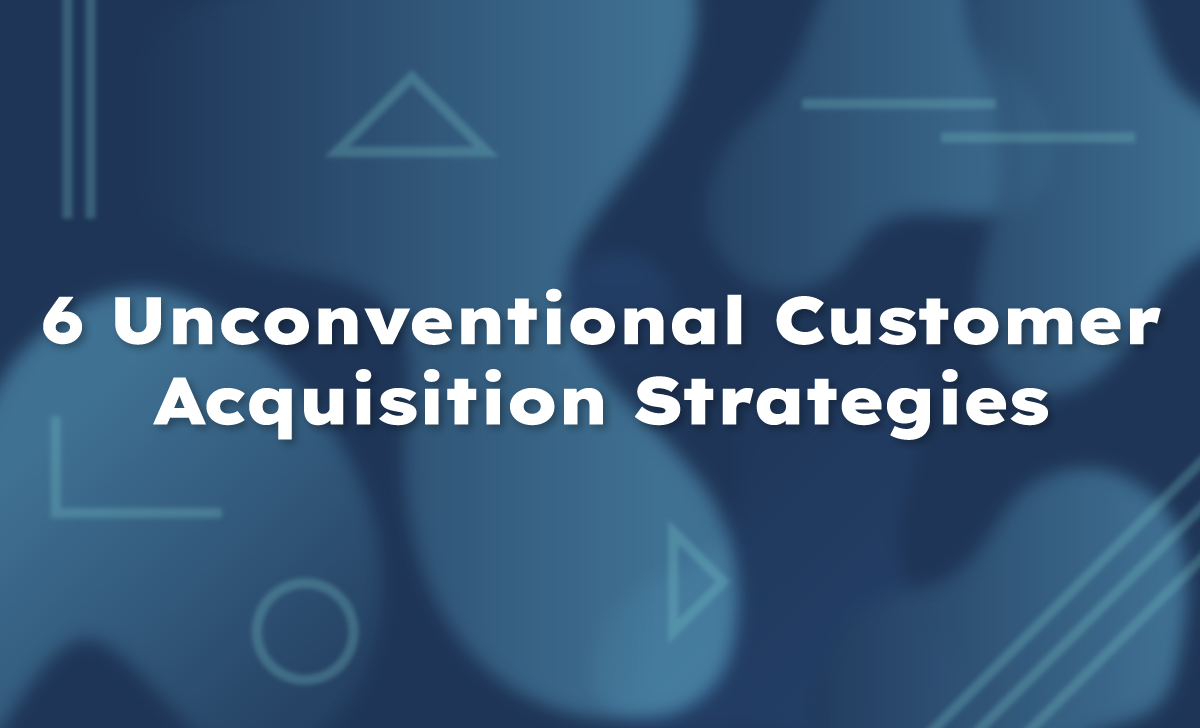
Even if you weren’t an early adopter of Slack, you were probably curious about the hype. Why were people so passionate about a work messenger tool? Not that chat tools aren’t sexy, but there must’ve been something else that made Slack so popular.
The secret? A killer customer acquisition strategy.
Slack highlighted its unique features, added valuable integrations, and offered its product for free. Combined with word-of-mouth and smart Twitter marketing, Slack was unstoppable, going from 500,000 users to 1.1M users in the first four months. Slack’s customer list eventually grew to include the likes of Fortune 100 companies like Starbucks, Target, Oracle, and ETrade. In late 2020, Slack was acquired by one of the biggest behemoths in the tech industry一Salesforce.
Not every startup can go viral like Slack, but getting creative with your customer acquisition strategies can generate some pretty incredible leads. In this post, we share six unusual acquisition methods and the startups that have benefited from them.
What is a customer acquisition strategy?
Just so we’re all on the same page, let’s take a moment to define customer acquisition. Most people think of customer acquisition as email marketing, SEO, or free trials. But at its core, “customer acquisition” refers to techniques that attract new customers to a business.
Notice that we said techniques, plural. People respond to messaging differently and user needs can change with industry trends or economic shifts. For that reason, a comprehensive customer acquisition strategy should include multiple tactics to gain new customers rather than relying on one method alone.
6 unique ways to acquire more customers
Much of customer acquisition is trial and error. What works for some companies doesn’t necessarily work for others. Regardless, brainstorming new customer acquisition strategies is key to keeping your strategy fresh. Below, we share some lesser-known, but fruitful, customer acquisition strategies to attempt this quarter.
1. Give your reviews a review
92% of B2B buyers are more likely to purchase after reading a trusted review. Having just five published reviews can increase the likelihood of someone making a purchase by 270%. That’s nuts!
Ignoring sites like G2, TrustRadius, and Capterra is irresponsible. Prospects shopping for a B2B tool inevitably come across these sites in their research. If you search for “best project management tool”, Capterra is 5th in organic SERP. When you click on the article, you might expect Asana or Trello to be at the top. Surprisingly, the first result is Monday.com. This list is sorted by “sponsored products”, but still, this is a fantastic way for Monday.com to get in front of potential buyers.
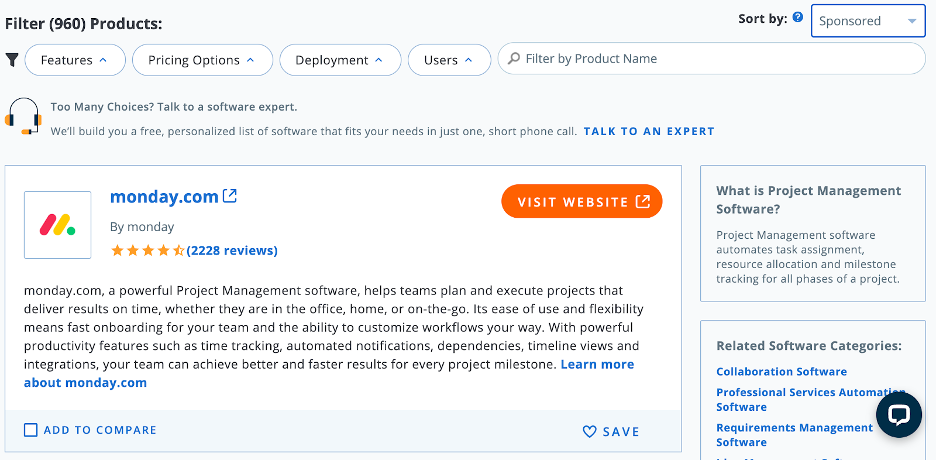
If you don’t want to pay to play, start by scouring these sites for reviews and responding to them. Answer as many customer questions as possible, thank people who leave positive reviews, and reply respectfully and constructively to negative reviews. Don’t forget to ask existing customers to post reviews, too. Encourage CSMs or SEs to bring this up in their calls, add a link to post a review in your newsletter, and post your request to write reviews on LinkedIn or Twitter. You’d be surprised how many people comply, especially if you have a great product.
2. Buy your competitors
Most early-stage startups aren’t flush with cash, but buying up a competitor’s domain might be worth it if you have a little to spare. Customers who are looking for something specific usually type in long-tail keywords in search. By buying up websites that rank for those long-tail keywords, you can instantly increase your organic traffic.
The idea is to come up with a list of websites that land at the top of SERP and approach their owners. When you’re compiling this list, consider specific keyword rankings, organic search traffic, number of pages, number of backlinks, relevancy, audience size, and, of course, price. You might assume that this strategy is extremely expensive, but oftentimes these websites are personal blogs and sell for cheap.
Matthew Barby, VP of Marketing at Hubspot, cites this strategy as his “#1 favorite tactic to roll out when working on a project with a brand new domain.” In this post, he outlines a deal where he actually saved money buying another domain. Before acquiring the new website, it cost roughly $450 for his company to produce each blog post, and they’d publish 3-4 per month. That really added up.
So his team did some sleuthing and found the perfect acquisition target—one that had already published over 500 well-performing articles. He negotiated with the seller to nab the domain at a price that worked out to only $31.70 per article, 7% of the original cost. Besides obtaining that website’s traffic, the company’s posts jumped two pages in search results, on average. Here’s a glimpse of their increase in organic traffic:

While this system requires some research and investment, it can really pay off in the long run.
3. Old content is the new content
The Content Marketing Institute found that small businesses (1-99 employees) spent an average of $81,500 on content marketing in 2019. That’s a big chunk of change. Blog posts and case studies do yield leads, but they only get published once...right?
Wrong. Repurposing content should be a major part of your customer acquisition strategy. Many B2B companies have hundreds of old posts on their site, and the deeper in the architecture posts are, the less likely they are to rank in search results. Make it a consistent practice to revisit old posts and update them with more recent statistics, new keywords, revamped CTAs, and even different titles. Consider merging a few posts to create an entirely new freebie and re-promote refurbished posts in newsletters, social media, or on Medium to attract more backlinks.
Venture Harbor, a venture studio based in the UK, used this strategy for their article on B2B lead generation strategies. The post was long and took a significant amount of time to write. To let it get stale would be a waste! The author updated stats, inserted more compelling images, included more keywords, and added “2021” to the title. As a result, the post now lands in the top 5 Google results for “b2b content generation”:

Venture Harbor’s blog is just one example. Hubspot consistently incorporates this practice into its content strategy and has increased organic traffic by 105%. It’s a similar story for Zapier. Updating just 21 posts drove 52,431 additional visits each month to the Zapier blog.
4. Create an online academy
Do people understand what your company does and how it can help their business? If you’re selling a complex tool or idea, an online academy can help. Take Segment, for example.
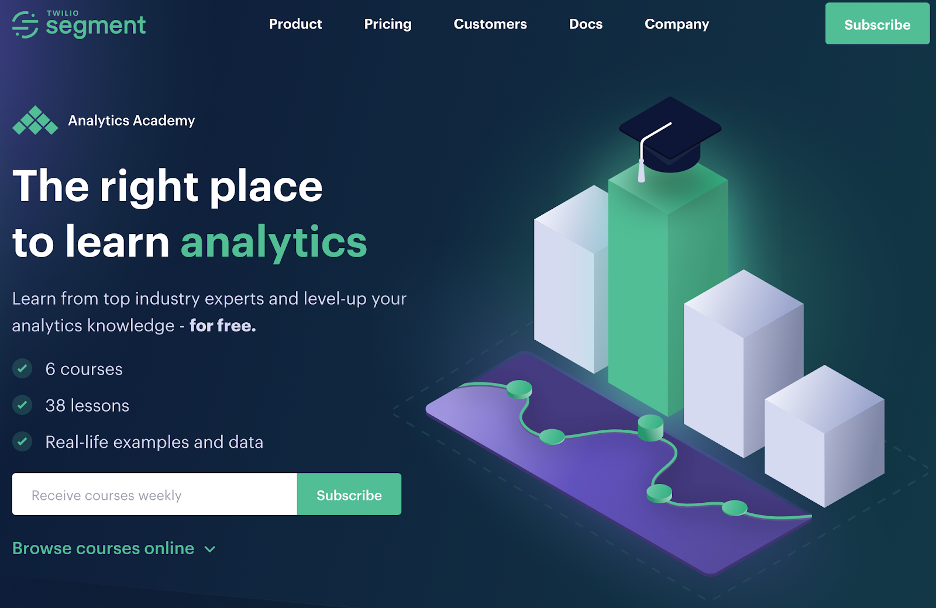
It can be tough to understand what Customer Data Platforms, or CDPs, do from a simple google search. To lower the barrier to entry, Segment created a free online academy with useful, non-salesy content. Prospects simply enter their email address and receive courses every week on the importance of customer analytics, what goes into a robust marketing stack, and how to make data-driven decisions. The leads generated from the academy are already interested in a CDP and want to learn more, meaning they are likely to be more responsive to sales teams that follow up.
Plus, the academy makes for great advertising. People who are bullish on the product can quickly send a link to a peer, friend, or boss. The embedded courses explain exactly why Segment would be a good investment. The academy is also helpful from a partnership point of view. If Segment wanted to pursue a reseller agreement with another company, the academy is a low-touch way to teach partners and their sales teams what Segment does and how it might fit into their GTM strategy.
5. Go viral on TikTok
Ok, hear us out. TikTok has 800 million active users, ranking ahead of LinkedIn, Twitter, Pinterest, and Snapchat. According to Statista, 29.5% of 20-29-year-olds account for TikTok’s active user base, and adults aged 30-49 make up another 30.3%. What would happen if you could reach even a fraction of those users?
TikTok is not the place to advertise your upcoming webinar or recently published whitepaper. That said, coming up with clever, relatable ways to interact with adults on the app can certainly pique people’s interest. Recruit your most creative teammate to think of outrageous, funny forms of content. Are there common challenges people face when trying to implement a tool in your space? Can you show some behind the scenes footage? Is your product meme-able?
We don’t yet have an example of a B2B brand doing this well, but a somewhat similar B2C brand, Wikihow, is excelling at this. First, they poked fun of themselves on TikTok, recreating (and encouraging others to recreate) pictures on their site:

When COVID hit, they began creating especially relevant how-to content about the pandemic, like how to wash your hands, how to make masks out of old t-shirts, and how to meditate. So many people gravitated to the Wikihow account that it gained the attention of the United Nations. Now, Wikihow is a part of the Verified Initiative of the United Nations.
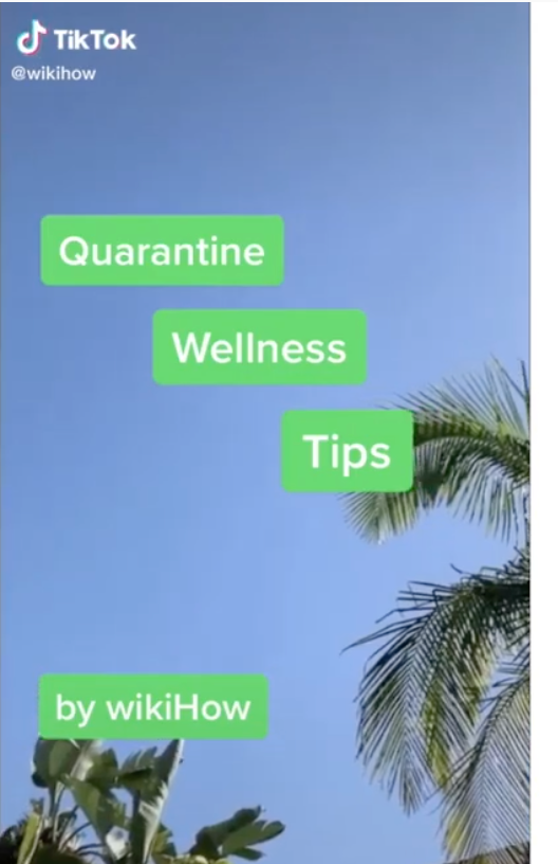
6. Leverage your NPS survey
Most customer success teams these days send an annual or bi-annual NPS survey to measure customer satisfaction. If your customers already respond well to your NPS survey, there’s something else you might consider adding in一a referral request. Customers already expect to receive this survey and have demonstrated that they’ll answer it. Adding one more question into the mix, “Is there anyone you think could benefit from this product?” can open a lot of doors.
If you don’t feel comfortable altering your NPS survey, that’s understandable. Other referral campaigns can work well, too. Make sure to incorporate a strong incentive, whether that be a discount, swag, or a certain number of free users. Blackbaud, a software solution for non-profits, employs this strategy with their “Blackbaud Champion” program. Even the language Blackbaud uses on this landing page gives customers the feeling that they’re giving Blackbaud the “ultimate compliment” by referring their colleagues. To ensure that referrals are legitimate, Blackbaud requires customers to specify exactly what product(s) their referral might be best suited for. For every referral that becomes a Blackbaud customer, the referee will receive a $100 gift card.
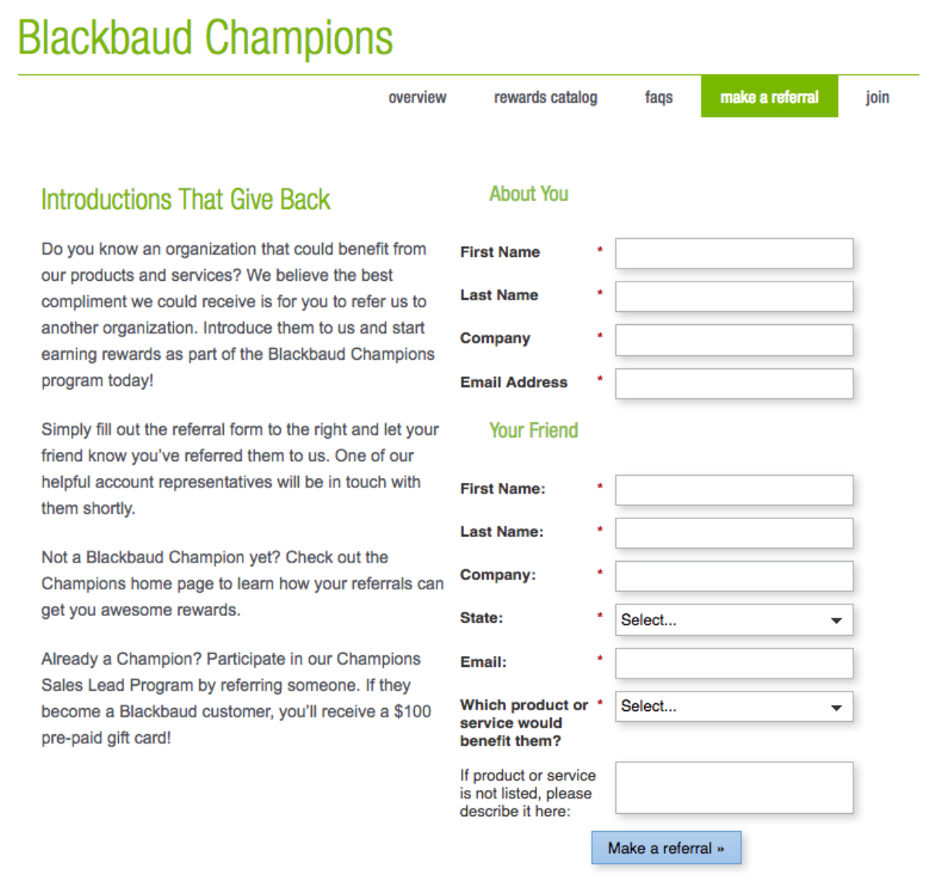
Put your customer acquisition strategy into practice
So let’s recap. Customer acquisition is all about drawing in new customers to your business. You’ve probably signed up for a free trial, downloaded a free “Definitive Guide to X,” or clicked on the highest ranking website in a Google search. While these methods can work, they are becoming unoriginal and aren’t enough on their own.
Repurposing content, gaining excellent reviews, creating online academies, and going viral on TikTok are a start, but now’s the time to think outside the box. What do you do every day that influences your buying decisions? What do you read to get informed? What social media do you use? What do your customers already love about your product and how can you play that up?
Put yourself in the mind of your consumers, get creative, and let the magic happen.